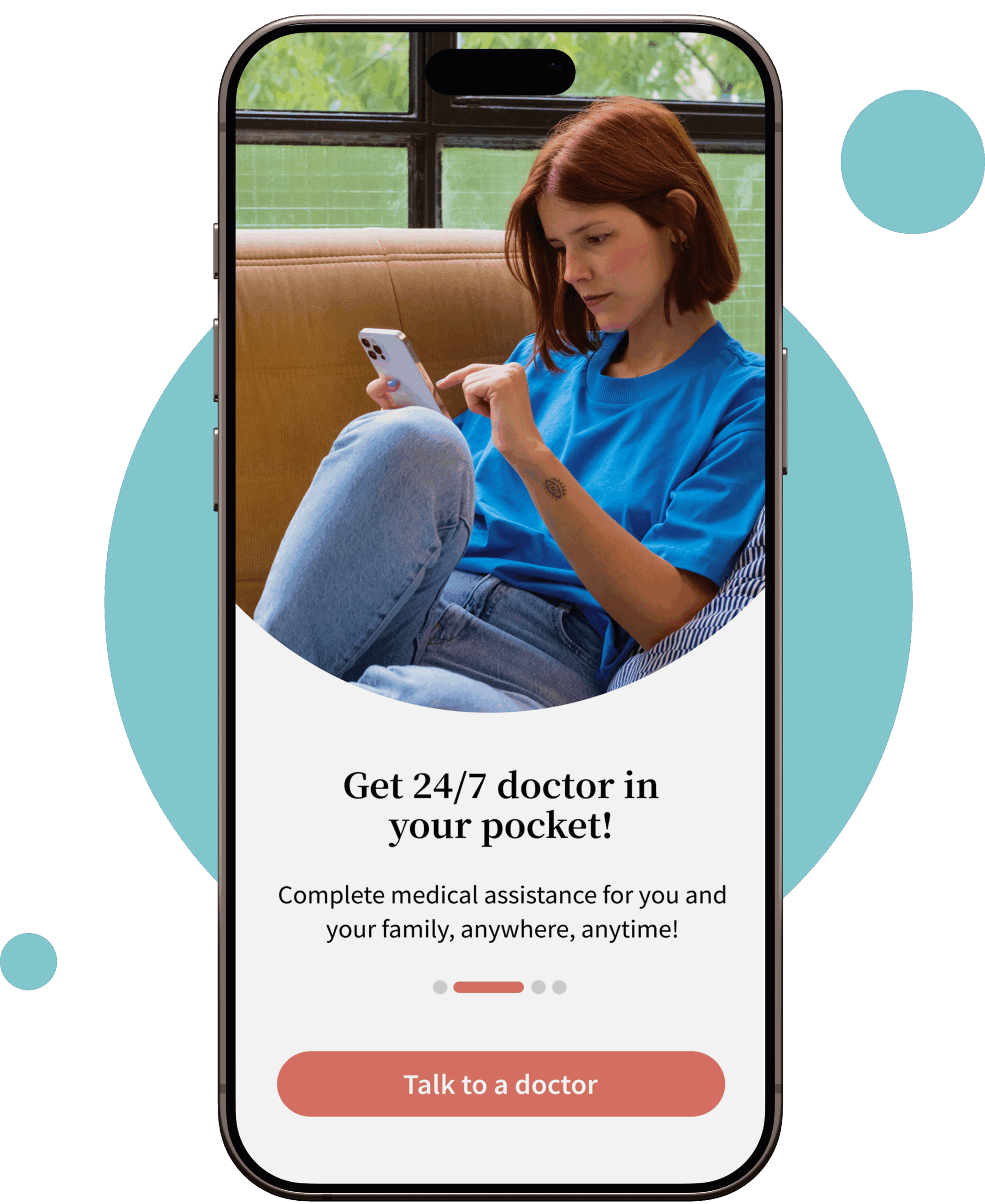Table of Contents
ToggleOverview
Ear drops can effectively alleviate pain, inflammation, and infection, but when confronting more serious ear conditions, the expertise of a healthcare provider ensures the selection of the most appropriate prescription medication. Over-the-counter (OTC) ear drops offer a convenient solution for managing various ear conditions, like earwax buildup. However, healthcare providers may prescribe specific ear drops, often containing antibiotics or steroids, for more severe issues such as ear infections. This article explores the distinctions between OTC and prescription ear drops, emphasizing the significance of consulting a healthcare professional before use.
What are the common needs for using ear drops?
Ear drops, as a form of medication applied directly into the ear canal, serve as a versatile solution for various ear conditions. Here are some common needs where using ear drops is vital:
- Swimmer’s Ear (Otitis Externa): Ear drops are often prescribed to treat a swimmer’s ear, an outer ear canal infection caused by water exposure. Over-the-counter drops can help alleviate discomfort and prevent bacterial or fungal growth in the ear canal. Prescription drops may be recommended for severe cases.
- Middle Ear Infections: In the case of middle ear infections, ear drops play a crucial role, especially when the infection is localized. Prescription drops, often containing antibiotics, are designed to target the infection directly, aiding in a more focused and efficient treatment approach.
- Earwax Blockage: Ear drops are a go-to solution for earwax blockage, offering a means to soften and facilitate the removal of excess earwax. Over-the-counter options are suitable for mild cases, while prescription drops may be recommended for stubborn or impacted earwax.
It’s vital to recognize that the choice between over-the-counter and prescription ear drops depends on the severity and nature of the condition.
What are the different types of ear drops?
The various types of ear drops are crucial in choosing the right remedy based on your symptoms and the specific ear condition you’re dealing with. Here’s an overview of different ear drops and their applications:
Ear drops for otitis media and otitis externa
Ciprofloxacin and dexamethasone combination eardrops are prescription ear drops that treat ear infections such as acute otitis externa (swimmer’s ear) and acute otitis media. They treat outer ear canal infections caused by bacteria, resulting in swelling, redness, and pain.
Over-the-counter swimmer’s ear drops with isopropyl alcohol or glycerin can help dry the ears faster. If symptoms persist or worsen after using over-the-counter drops, seeking professional medical advice is crucial.
Acute otitis media is common in children with ear tubes (tympanostomy) to prevent excessive fluid in the middle ear. Ciprofloxacin, an antibiotic, combats bacteria, while dexamethasone, a steroid, alleviates redness, itching, and swelling. This prescription medication ensures a targeted approach under your doctor’s guidance.
Earwax removal drops
When dealing with earwax buildup, specific ear drops can soften and loosen the wax, making removing it easier. There are three types of earwax drops:
- Non-water-based
- Water-based
- Oil-based
Ingredients like carbamide peroxide, hydrogen peroxide, glycerin, and sodium bicarbonate are commonly found in these drops. For impacted earwax, healthcare providers may recommend drops containing these ingredients. Proper usage involves allowing the drops to work and gently rinsing the ear canals with warm water.
Ear drops for pain.
While over-the-counter pain relievers like acetaminophen and ibuprofen are effective against ear pain, pain relief ear drops with homeopathic ingredients such as belladonna, wolfsbane, and ferrum phosphoricum are also available. It’s essential to consult a healthcare provider before trying homeopathic remedies.
Anesthetic (numbing) ear drops
Anesthetic ear drops can alleviate pain and swelling associated with ear infections. However, they are not commonly recommended, as they do not treat the infection. Other over-the-counter pain relievers like Tylenol (acetaminophen) or Advil (ibuprofen) are often preferred. The use of anesthetic ear drops should be based on carefully evaluating included ingredients due to potential adverse reactions.
Ear drops for itchy ears
Corticosteroid ear drops can help ease itchy ears without infection, while those containing anti-infective medications and corticosteroids are suitable for infections. Common corticosteroid ear drops include dexamethasone, hydrocortisone, and fluocinolone. It’s important to note that ear drops for itchy ears are available only with a prescription.
The different types of ear drops allow individuals to make informed decisions about their ear health. Always consult a healthcare provider to determine the most appropriate ear drops for your condition.
How do they work in treating ear infections?
Ear drops treat ear infections by halting the growth of bacteria and fungi within the ear canal. This targeted approach is crucial in addressing acute otitis externa (swimmer’s ear) and acute otitis media. Following is the general mechanism of action of different ear drops:
- Bacterial growth inhibition: Antibiotic ear drops, such as those containing Ciprofloxacin, play a pivotal role in stopping the growth of bacteria. These drops reduce pain and swelling in the ear canal, especially in otitis externa cases where the outer ear canal is susceptible to bacterial invasion.
- Fungal growth prevention: Antifungal ear drops are employed for infections caused by fungi. These drops, often containing ingredients like clotrimazole or fluconazole, work to inhibit the growth of fungi, alleviating symptoms and promoting healing.
- Reducing moisture: Wetness in the ear canal creates an environment conducive to bacterial and fungal growth. Ear drops may also contain drying agents such as glycerin or alcohol. By reducing moisture, these ingredients contribute to the prevention of further microbial proliferation, aiding the overall treatment process.
- Drying ingredients: Including drying ingredients like glycerin or alcohol serves a dual purpose. Not only do these components contribute to inhibiting bacterial and fungal growth, but they also help dry out the ear, which is particularly beneficial in cases of swimmer’s ear.
- Pain and swelling reduction: Beyond their antimicrobial properties, ear drops with steroid components like dexamethasone help relieve redness, itching, and swelling caused by ear infections. This combination approach ensures a comprehensive treatment strategy.
It’s important to note that the effectiveness of ear drops relies on proper usage and adherence to prescribed guidelines. Consult a doctor to ensure optimal outcomes in treating ear infections.
When not to use ear drops
While ear drops are a valuable tool in managing various ear conditions, there are crucial instances when their use should be avoided. If you have or suspect a ruptured eardrum, it’s important to refrain from using ear drops entirely. A ruptured eardrum creates a direct passage from the outer ear to the middle ear, allowing chemicals from the drops to enter and potentially cause harm. Using ear drops in the presence of a ruptured eardrum poses a risk of introducing substances directly into the middle ear, potentially causing further complications.
Symptoms of a ruptured eardrum
Following are the symptoms of a ruptured eardrum
- Ringing in the ears
- Ear drainage
- Hearing loss
- Ear pain
- Vertigo
Are ear drops safe for infants and young children?
Gentamicin and hydrocortisone ear drops are commonly prescribed options for treating ear pain and infection in children. Gentamicin, an antibiotic, targets harmful bacteria, effectively eliminating the infection when administered per the doctor’s instructions.
These ear drops may be recommended even for children under two years old with an ear infection. However, seeking a doctor’s advice is crucial. In cases where antibiotics are not prescribed, healthcare providers may opt for eardrops containing a painkiller and an anesthetic.
Will an ear infection go away on Its own?
Some ear infections may naturally subside within a few days, especially if they are mild or caused by factors such as viral infections. In these cases, the body’s immune system can often effectively combat the infection, leading to a spontaneous resolution.
If you experience persistent symptoms, such as ear pain, drainage, or hearing issues, consulting a healthcare provider is imperative if symptoms persist or worsen. A healthcare professional can conduct a thorough examination to diagnose the cause and severity of the infection accurately to determine the appropriate course of action and ensure effective treatment.
How long will I need to use eardrops?
The duration of usage depends on the severity of the condition. Most people feel better in about three days with a swimmer’s ear, but using the drops for at least seven days is advised. Notify your provider if you still have symptoms after a week. Usually, doctors recommend ten to fourteen days for adults and teenagers (12 years of age and older), depending on the infection. However, the recommended duration is ten days for children (1 to 12 years of age).
When should I see a doctor?
Contact your healthcare provider if your symptoms persist or worsen after two to three days. This includes instances of:
- High fever
- Intense pain behind your ear
- Facial paralysis
Immediate medical attention is essential for symptoms like hives (indicating an allergic response), difficulty breathing, and dizziness. Your provider can prescribe specific ear drops for infections or recommend other necessary antibiotics or steroid medications.
Other FAQs about ear drops for ear infections
No, over-the-counter disinfectant ear drops can not be used for every type of ear infection as, in some cases, prescription ear drops with antibiotics or steroids are required to combat the infection. Consult a doctor to determine the most suitable prescription ear drops, considering potential side effects like burning sensations or rashes.
If your kid is exhibiting signs such as ear tugging, crying, difficulty sleeping, fever (especially in younger children), fluid drainage from the ear, loss of balance, or difficulty hearing or responding to auditory cues, it might be a serious infection. Consult a healthcare provider for appropriate treatment.
Yes, some ear drops are available over the counter that help cater to mild ear pain, itching, or wax buildup, while a prescription is required for infections. Consult with a healthcare provider before use, especially if there’s suspicion of a ruptured eardrum.
No, severe bacterial infections require immediate antibiotic treatment, which is unavailable over the counter. However, the body’s immune system can often resolve minor middle ear infections without antibiotics.
Leaving ear drops in for an extended period or when the ear is already inflamed can lead to swelling, causing temporary hearing loss. The doctor’s advice can help you avoid the risk of complications.
Ciprofloxacin and dexamethasone combination ear drops effectively treat ear infections like acute otitis externa and acute otitis media. Consult with a healthcare provider for prescription ear drops suitable for your condition.







